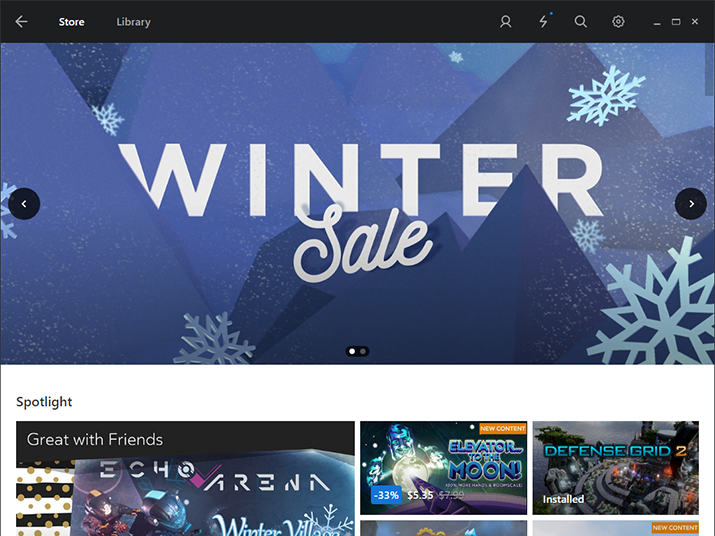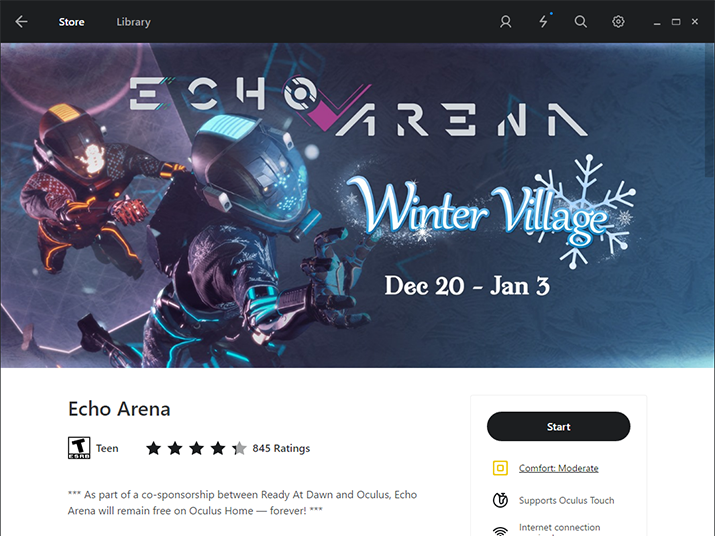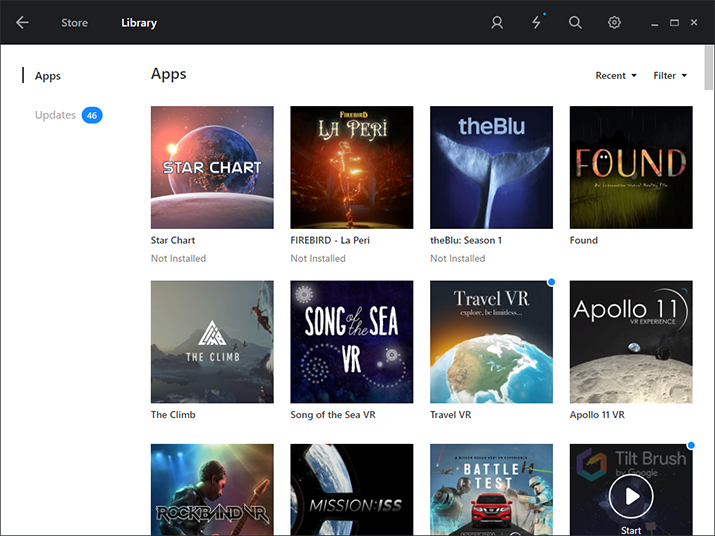The Content and Gameplay
Onto the actual fun stuff. If you haven’t read the first post in this series, you can catch up here.
To access/purchase content for the Rift I had to log in to the Oculus Store, their exclusive content distribution platform. I had to either register with an existing email or make a new one using (surprise, surprise) my Facebook account. I was greeted with a virtual living room, complete with virtual fireplace, bean bags and rugs. The UI itself is pretty clean and simple, with menus grouped by function in separate floating windows. It gave the whole experience an “augmented reality” aesthetic.
In terms of usability, I didn’t have a hard time navigating with the Touch Controllers. Everything is clearly labeled, excluding the bottom three icons which is how I jump from the store to my app library. My only gripe was the library; maybe adding a search function, or a text-only mode, would improve usability, since the app titles does not show up while hovering over the picture. When I only had a small number of titles, it was easy to select which one I wanted. Once my library grew it became a game of app hunt. Simply adding the titles on a black transparent overlay might solve the problem.
I’m not much into the social aspect of Oculus, but they did include the ability to add/accept friend requests on the far-right window. I can also access my info and preferences in the same area if I need to update password or payment info.
As for the content I can buy from the store, it can vary from action/exploration oriented type games to utilitarian applications. While Oculus is still a relatively new game company, Facebook is pouring quite a bit of money into their in-house game development to create exclusive content, and it shows. I do think this ‘walled-garden’ approach can be restricting to developers, but this allows Oculus to monitor the quality of the content being submitted. Exclusive games like Lone Echo, Robo Recall, The Climb, Superhot VR, and The Unspoken show off the capabilities of the Rift and Touch Controllers, as well as the polish that’s lacking in a lot of other VR games. I even found the VR gallery applications enjoyable, showing off the cinematic capabilities of the Rift. If I ever get tired of blasting robots or watching animated shorts, I can also use apps like Google Blocks/Tilt Brush and Medium to get a bit more creative. From time to time, Oculus also gives away free games, so as a VR user it shows how invested they are in expanding their platform while providing the best experience possible.



As a plus, I can also use my Steam account to access its library. All I had to do was check a box in the preferences, log into Steam and turn on SteamVR. It detected my sensors as well as my head unit without any problems.
What’s the Verdict?
While the initial setup was a bit of a pain, I think it was all worth it once I got it up and running. Experiencing VR for the first time was unreal, and I didn’t think stepping into a virtually created world could be exciting. Can it replace traditional gaming? Probably not, but VR is much more applicable to real-world situations. It’s not just confined to being an entertainment machine, which makes it a very versatile technology. VR is still a growing industry, and it’ll be interesting to see how it’s going to evolve in the future. Have you had your first VR experience yet?
*Oculus has announced a couple of new things during the VR Conference in October:
- Oculus Go: a self-contained headset that requires not PC or smartphone.
- Rift Core 2.0: A revamped Oculus home, and an expanded workspace called Dash
- Project Santa Cruz: ongoing development of inside-out tracking.


